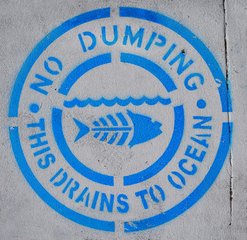WOIMA Blog 12/2018
Waste in Numbers 1/2
Today, waste in its various forms is a key part of our everyday life. We generate it, we throw it away, we see it polluting our environment and we, the mankind, suffer the consequences of it. But seldom do we stop to think about the magnitude of the problem. Here are a few facts.
In 2016 the world generated close to 2.5 billion tons (= million million kilograms) of municipal solid waste (household and commercial rubbish). That equals to 740 grams each day for every man, woman and child on Earth. Spread evenly, it would cover all of England with a ten-centimeter waste mattress.
As people grow richer, they consume and discard more. Advanced economies make up 6% of the world’s population but produce 34 % of its rubbish. Unfortunately, the developing world is catching up fast. On current trends, the World Bank projects that by mid-century Europeans and North Americans will produce a quarter more waste than they do today. In the same period, volumes will grow 50% in East Asia, they will double in South Asia and triple in sub-Saharan Africa (see map). The annual global total will approach 4 billion tons.
And then there is the biggest waste management problem of all: 40 billion tons of invisible but dangerous carbon dioxide dumped into the atmosphere every year. Greenhouse gases from the waste industry, mainly emitted by a cacophony of chemical reactions in landfills, accounts for 8-10% of all climate-cooking emissions. In the developing world, only half of all municipal waste is collected. In low-income countries as much as 90% ends up in open dumps further escalating the problem.
Currently 37% of solid waste goes to managed landfills and 33% to unsanitary open dumps worldwide. This landfilled and dumped waste quantity is enough to fill the famous Wembley Stadium in London eleven thousand times over, every single year. Roughly 11% of the waste is incinerated and some goes to compost heaps. Two-thirds of aluminum cans are currently recycled in America, but only 10% of plastic, All-in-all, only 13% of municipal solid waste is recycled globally.
Discharged into seas, rubbish can return to wreak havoc on land. In August 2018 the Arabian Sea spewed 12,000 tons of debris and litter onto the shores of Mumbai in two days, enough to fill 75 large fishing trawlers. Fishermen in the Arabian Sea complain they net four times as much plastic as fish. The “great Pacific garbage patch”, an Alaska-sized ocean gyre in the north Pacific Ocean, where currents channel all manner of flotsam, contains close to 100,000 tons of plastic debris. And there are five more gyres just like it gathering debris in other Oceans.
Take, make, dispose” must now shift to “reduce, reuse, recycle”
Contact WOIMA, if you see yourself as collaboration partner in saving the planet. Ask more about turning waste into wellbeing with WOIMA Circular Economy Solutions.
WOIMA Social Media accounts






